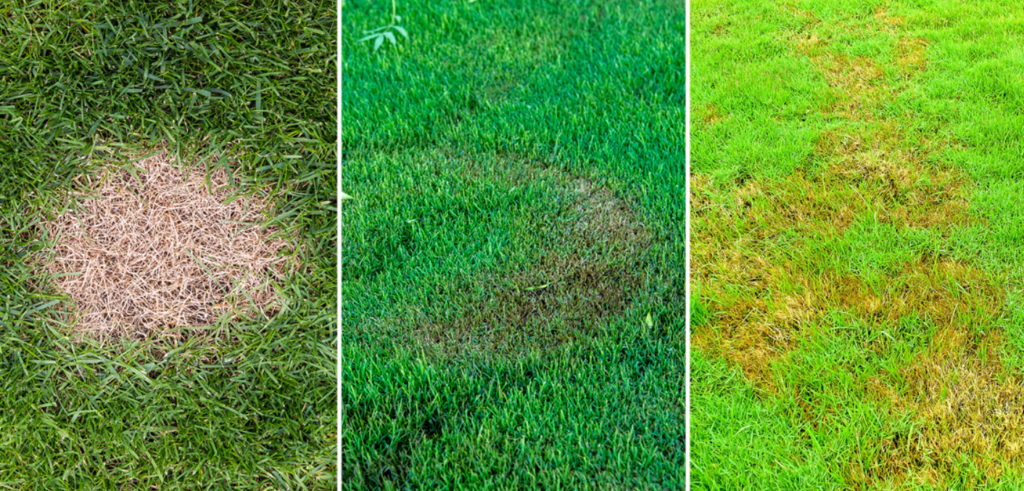Main Menu
Unsure of the culprit or how to remedy it? In this article, we delve into common causes of brown patches in lawns and explore effective solutions to restore your lawn’s health.

Lawn Grubs: If you’ve observed rapid development and spreading of brown patches in your lawn, lawn grubs could be the culprit. To confirm their presence, conduct a simple grub test by mixing a few drops of dishwashing liquid in water and pouring it over the affected area’s edge. Observe for grubs surfacing, ideally during dawn or dusk when they’re more active. If grubs emerge, consider using a quick knockdown product like Battle Insecticide or Baythroid Advanced for Lawns to eliminate them. To prevent future grub infestations, opt for a preventative insecticide such as Grub Guard Ultimate, offering protection for up to six months.
Fungal Diseases: Are fungal diseases causing your lawn’s brown patches? Addressing underlying conditions conducive to these diseases can often resolve the issue naturally. Signs of fungal disease include discoloration, brown/yellow patches, and fungal growth like mushrooms. Factors contributing to these diseases include soil compaction, shade, excessive watering, over-fertilization, improper mowing, and weather conditions. Remedial actions include aerating the lawn to alleviate compaction and improve drainage, increasing sunlight exposure by pruning surrounding vegetation, avoiding over-watering (especially in the afternoon/dusk), and maintaining consistent mowing practices. If necessary, consider using a fungicide.
Urine Burn: Does your dog’s urine leave unsightly burn marks on your lawn? High nitrogen concentration in urine can cause lawn burn. Symptoms include isolated patches that remain localized, potential greening around the edges, and occurrence in areas frequented by pets for urination. Various methods can help mitigate urine burn; refer to our blog for detailed strategies.
Scalping: If brown patches appear post-mowing, you may have scalped your lawn by mowing too short. Scalping occurs when excessive leaf removal leads to patchy brown appearance. Uneven lawn levels or infrequent mowing intervals can contribute to scalping. Consider top dressing for uneven lawns and refer to our blog for further guidance.
Dry Spots: Dry patches in your lawn can be addressed by aerating with a garden fork or aerator to loosen soil compaction, followed by applying a wetting agent like Lawn Soaker to enhance soil water absorption. Ensure thorough watering until signs of recovery appear, then apply a suitable fertilizer such as Lawn Solutions Premium Fertiliser to promote lawn health. This can be purchased at our online shop, click here to visit.
By identifying the specific cause of brown patches and implementing appropriate remedies, you can rejuvenate your lawn and restore its lush green beauty.


Receive regular updates about company news, project updates & new products.

Receive regular updates about company news,
project updates & new products.
Website Design By: